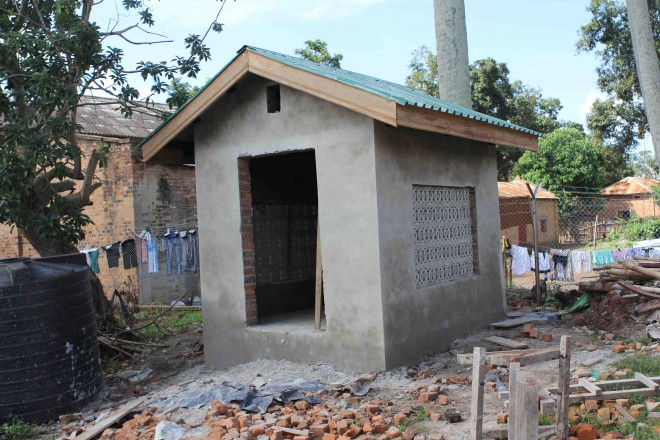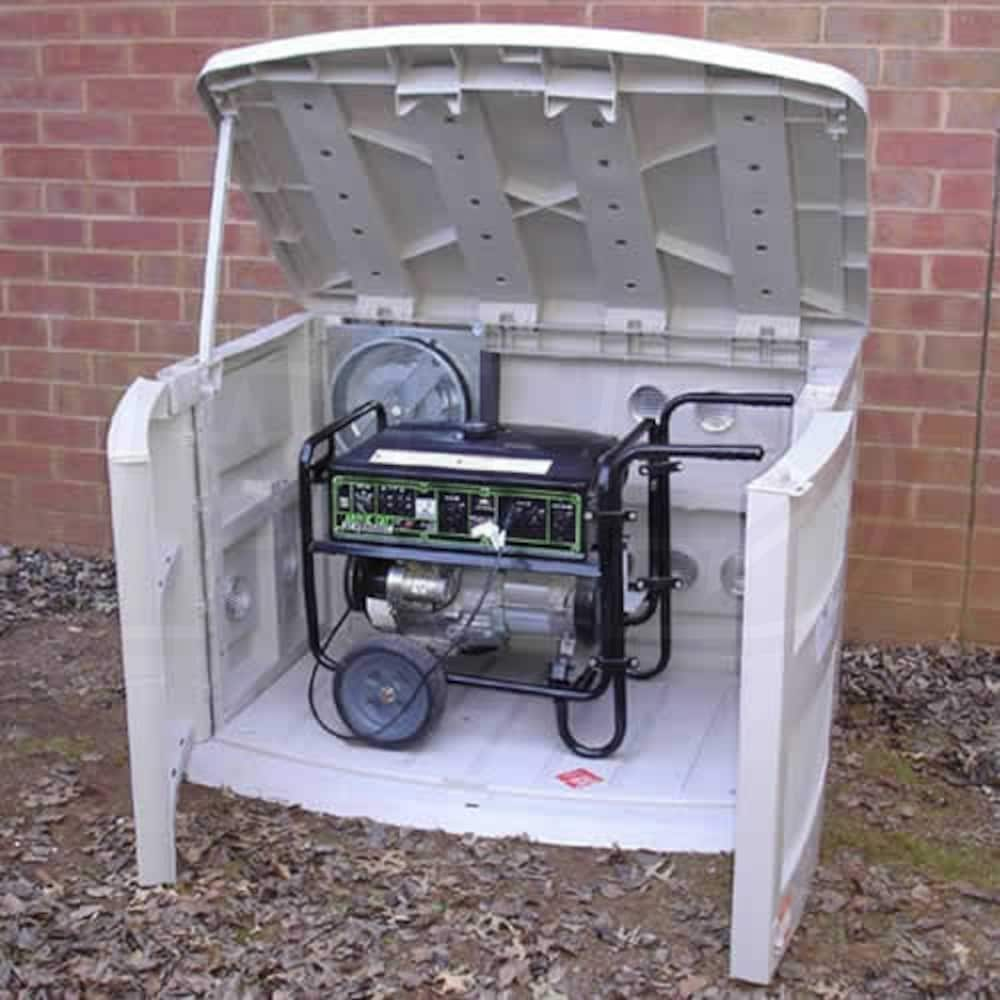Table Of Content

Regular generators, in contrast, run at a constant speed, which you adjust manually as needed. With an inverter generator, if you have only one or two small items plugged in, the engine throttles down on its own, using just enough gas and power to maintain the load. You can toggle eco mode on and off (manufacturers say to shut it off if you’re powering constant high-draw items), and with our Ryobi pick, you can even do so in its app. Honda put together a helpful graphic that gives a sense of this difference in noise level and fuel efficiency in its model. A basic but well-equipped home generator, the Generac PowerPact is an excellent budget buy.
Portable Generator for House Power
The Goal Zero model has stats similar to those of the Ego but runs on a single internal battery. Another major difference between the two is that the Yeti often sells for over $3,000, about $2,000 more than the Power+ Nexus. Although you can charge the Yeti with a solar panel, that accessory needs to be purchased separately and adds $300 and up depending on how many you get (each one lowers the charging time).

The Best Standby Generators of 2023
While these generators can help in emergency situations, they’re limited in the wattage they supply and are typically only useful for powering small appliances and devices. Obviously, small generators will only offer enough backup power for minimal lighting and keeping your electronic devices charged. In contrast, larger, whole-home generators may provide enough backup power to run water heaters, HVAC systems, or large appliances. Whole-home or standby generators can deliver enough power to run an entire home. These units are a permanent part of your home and usually require professional installation.
The Best Generator Brands of 2024 - Bob Vila
The Best Generator Brands of 2024.
Posted: Thu, 11 Apr 2024 07:00:00 GMT [source]
Generac Powerpact Standby Generator
Overall, we were very impressed with the Ego Power+ Nexus Power Station, but as good as it is and as much as we enjoyed using it, we need to be clear about the expectations you can have for the battery life. Under the same 1,900-watt load that we tested the other generators with, the Ego Power+ Nexus (with its two 7.5 Ah batteries) could sustain the draw for only about 20 minutes. (In contrast, the Honda EU2200i, on a single tank of gas, held a similar load for roughly three hours.) After that, the batteries are drained, and you’re looking at approximately eight hours of charge time. With two additional 7.5 Ah batteries, you’d bump the Ego’s capabilities to about 40 minutes under the same load. It gives no sense of the time remaining or the power usage, nor does it offer maintenance reminders.
How to Choose the Right Size Generator
Also keep in mind that some appliances—air conditioners, refrigerators, and sump pumps, for instance—draw a lot more wattage at the moment they’re cycling on. These surge watts can throw off your calculations if you don’t account for them. “There’s no need to go larger unless you want to be able to power more in a pinch and are comfortable with needing to keep more gas on hand,” Kollontai says. Some of the larger portable generators in our ratings can burn through about 20 gallons of gasoline per day. Popular on job sites, portable generators provide limited power for small, short-term use. For greater efficiency and longer run time, choose auto-idle to idle the engine down when it's not in use.
Best Overall, Portable
While portable generators may provide enough power for lights and small electronics, they can’t power your entire household. The chart below estimates how much electricity common household appliances, devices, and equipment consume so you can find whole-home generator with enough wattage to meet the power needs of your household. Larger-capacity generators like this are particularly useful as backup power during power outages. Connected to the home through a manual transfer switch, instead of running extension cords to individual appliances, the generator can run directly to the home’s critical circuits. This unit could also supply power at construction sites, or to large RVs that have significant power needs.
Jackery Power Station
That makes it perfect for doing projects around the house or garage, or for hosting backyard entertainment. In spite of those flaws, the Ego is still an excellent power source, with an intuitive app that helps you stretch out your power supply. During our real-world testing, we always reached for this model above the others due to the simplicity of the battery power as opposed to gas. It’s handy if you live in an area prone to short-term power outages, but you’ll need to keep a close eye on the battery levels. If you’ve already invested in Ego’s batteries through purchasing the company’s lawn gear, the Power+ Nexus is even more appealing, as the batteries are all compatible. Champion is a smaller manufacturer of all kinds of generators, ranging from small inverter models that run on gas, all the way up to large standby generators that can power an entire house using propane or natural gas.
We tested this feature by placing a large cardboard appliance box over the unit while running and found that it shut off in just 16.5 seconds. The Predator 9500 is a big inverter, capable of powering all the critical circuits in a modest-size home. With a generator this size, we can’t overstate the importance of the four wheels it sits on and the sturdy, fold-out handle that facilitates moving it.
Best Whole House Generators 2024 - Forestry.com
Best Whole House Generators 2024.
Posted: Wed, 17 Jan 2024 08:00:00 GMT [source]
Additionally, many models have a twist-lock plug that can provide up to 240 volts and be used to power circuits in a home via a manual transfer switch. Picking a generator depends mainly on the size of your home and what you wish to power. The average house will take at least 5,000 to 7,500 watts to run only the most critical equipment—think fridge, heat, and water. Often, a portable home generator can get you through an outage, but there are also options that are capable of powering your entire house. The EU2200i is listed as an 1,800-watt generator capable of 2,200 starting watts, but it exceeded that in our tests.
Charge it up by connecting it to a solar panel, wall charger, or 12V car charger. This popular generator model maximizes power output but minimizes space requirements. The housing of the unit is 4 feet long and 2 feet wide, which is larger than the most compact generators available but on par with typical whole-home generators. Generac also equipped this unit with a Quiet-Test weekly self-test mode that operates at just 57 decibels. During regular operation, the generator is rated for 67 decibels, which is average operating noise but impressive for a generator of this power capacity. Keep in mind that this model doesn’t include a transfer switch, so you’ll need to purchase that separately.
Generators are available in various sizes that can power just a few essential home devices or an entire home’s worth of devices and systems. A whole-house generator is simply a large version of a standby generator, capable of temporarily providing enough electricity to operate everything, or nearly everything, in your home. With intelligent power management features, automatic transferring and start-up and self-running weekly tests, home generators are designed to last a long time with only simple, regular maintenance. Their power output and general dependability make them a worthwhile investment, especially if you live in an area prone to power outages. Unlike portable generators, home generators are ready the moment your power goes out and most will even start themselves automatically when they sense the draw of power from your home’s electrical panel.
Unlike their smaller, portable cousins, home generators are permanently installed and connect directly to the home’s electrical circuits. A whole house generator can provide back-up power for your entire home, including for essential appliances like your air conditioner, sump pump and refrigerator. Property estimated and installed, you should be able to run everything at full capacity, whether you’re going off the grid permanently or you’re forced off temporarily due to an emergency.
That's about what you'll spend on the installation of an entry-level standby generator, which is permanently connected to your home's electrical panel by a professional electrician. So it might make more sense to choose a smaller standby unit, rather than a portable model with transfer switch. Home generators are available in a variety of models, with some of the most popular being home standby generators, portable generators, inverter generators, and portable power stations. For this guide, we focused on portable inverter generators in the 2,200-watt range. These models are small—about the size of a piece of luggage—and as long as you can lift about 50 pounds, they’re portable.
And while noise may be the least of your worries in an emergency, this portable generator operates at a noise level of about 68 dBA—louder than a normal conversion and a tad quieter than a vacuum cleaner. Your installer will prepare the installation site outside your home, place the generator, run the natural gas or LP fuel line, install the transfer switch, and make all of the necessary electrical connections. And they will make sure that your backup generator runs properly, and is ready for its first power outage. A standby generator produces electricity to power the systems and appliances in your home during a power outage.

No comments:
Post a Comment